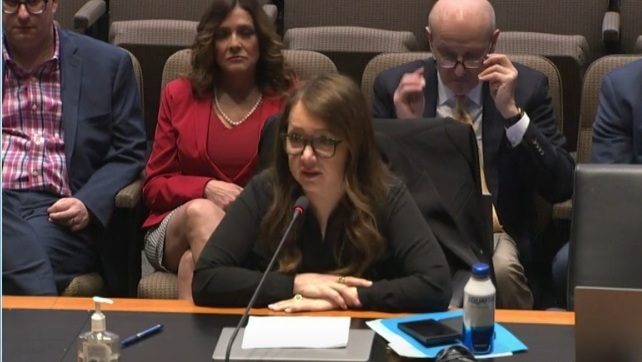
Revealed: American mid-tier banks’ climate targets lag top counterparts
Less than a fifth of all mid-tier banks in the United States have explicit net-zero targets
U.S. mid-tier banks’ climate commitments are lagging those of the nation’s top financial institutions, slowing the pace at which the global economy can achieve net-zero emissions.
In fact, it has been revealed that, in the United States, less than a fifth of mid-tier banks have explicit net-zero targets.
Business management consulting firm Baringa shows in a new study - after assessing the climate goals of 18 organisations - that medium-sized banks are largely lagging their larger counterparts.
“Of the 18 organisations we analysed, half have set emissions reduction goals,” Baringa writes, citing “an encouraging trend in the right direction.”
“But when it comes to setting concrete targets, mid-tier banks fall far behind major financial institutions.”
Using data from publicly available environmental, social and governance (ESG) reports, the consulting group finds that just 18% of these banks, which are holding on average $160bn in assets, have explicit net-zero pledges.
“That’s in stark contrast to their larger counterparts,” it says, as eight of the top 10 largest U.S. banks have committed to reach carbon neutrality by 2050.
Baringa recognises that a small portion of these mid-tier banks are in accordance with the Task Force on Climate-related Financial Disclosures’ (TCFD) recommendations. “Unfortunately, they seem to be the exception, not the rule.”
Emissions
If 67% of the organisations analysed report on their Scopes 1 and 2 emissions, when it comes to financed emissions – also known as Scope 3, category 15 which includes investments, lending and advisory services, “they have yet to get to grips with perhaps the biggest piece of the emissions disclosure puzzle.”
Under the Greenhouse Gas Protocol, the Corporate Value Chain (Scope 3) Standard provides a methodology enabling companies to voluntarily account for emissions they emit outside their own walls.
They are much more difficult to assess, Baringa points out, but they are also “by far the greatest contributor to banks’ environmental footprints.”
But as financial players fall under growing scrutiny by regulators, investors and consumers calling for more transparency on their environmental, social and governance (ESG) credentials, they have the chance to lead the low-carbon transition.
Unfortunately, they seem to be the exception, not the rule.
‘Change is coming’
Baringa highlights that until now, regulators have mostly looked at the U.S. biggest financial institutions, placing them at the front of the sector’s net-zero race and leaving to mid-tier banks “a more tentative approach” to setting such goals.
“After all, they’re at the vanguard of supervisory scrutiny, which has driven them to take action sooner,” it flags. “Many large U.S. banks have a head-start because they’ve already had to comply with climate legislation in other jurisdictions, such as Europe.”
But according to the consulting firm, “mid-tiers shouldn’t take this as a signal to slow down on emissions reduction objectives.”
In December 2021 and March 2022, both the Office of the Comptroller of the Currency (OCC) and the Federal Deposit Insurance Corporation (FDIC) respectively proposed risk management principles with a view to helping banking organisations with more than $100bn in total assets develop capabilities and resources to manage climate-related financial risks.
New SEC proposals coming
Meanwhile, the U.S. Securities and Exchange Commission (SEC) is planning to finalise new proposed rules by spring, including the enhancement and standardisation of climate-related disclosures for investors.
They would require large U.S. companies to disclose their Scope 3 emissions if they have set a target that includes them and disclose climate-related risks which are “reasonably likely to have a material impact on their business, results of operations, or financial condition.”
Late last year, the Federal Reserve Board (FRB) drafted a similar guidance than those of the OCC and FDIC for a better management of physical and transition risks associated with climate change. The proposal was supported by six of seven governors.
Governor Christopher Waller said that he disagreed “with the premise that [climate change] poses a serious risk to the safety and soundness of large banks and the financial stability of the United States.”
Baringa says that “institutions here can take a holistic approach and start viewing their whole business through the lens of climate” as U.S. regulations arrive in quick succession.
“This is very different from other countries such as the U.K., where regulations have come in different areas at different times, so climate activities often end up in siloes.”
“It’s clear that change is coming,” it adds.
Every day of delay puts banks at real risk of being unable to meet regulatory commitments.

‘The right balance’
From devastating floods to scorching temperatures, extreme weather events are intensifying all over the globe, forcing companies to assess the consequences of the physical risks linked to climate change on their revenues, operating costs and asset values.
But that’s not all. U.S. corporations need to consider transition risks involving changes in policy, technology, pricing and consumer behaviour as market’s demand for lower-carbon products and services rises and limit their exposure to stranded assets and related high costs.
“Climate risk can’t operate in a silo – it has impacts across an entire business,” Melissa Klimek, expert in climate and sustainability strategy at Baringa, says in the report.
“It’s important for banks to embed climate risk identification, assessment and management activities into their wider risk management framework.”
To do so, the consulting firm recommends U.S. companies to identify these risks through scenario analysis, stress testing and other qualitative and quantitative tools.
“More mid-tier banks seem to be waking up to this reality,” Baringa emphasises, with 67% of the 18 banks in the study expressing intent to assess or analyse climate risks.
Yet, only 39% appear to be using any climate risk management tools to guide their future decisions and investments, against nine of the top 10 U.S. banks.
On the green finance front, mid-tier banks also deceive.
Baringa notes that 100% of them offer social finance, notably support to small and mid-sized businesses and other less-mainstream borrowers – a reflection of their strong presence in local communities.
But when looking at the share of total loans, just over 6% on average goes to sustainable finance, with most banks betting on social finance at 4.40% and green finance at 1.66%.
For Hortense Viard-Guerin, expert in climate and sustainability strategy at the consulting firm, “it’s about finding the right balance between mitigating the climate risk, but still pushing the ESG agenda and supporting communities in need.”
“The window of opportunity is closing fast,” Baringa points out.
“Every day of delay puts banks at real risk of being unable to meet regulatory commitments, protect long-term business value and – most importantly – make a successful transition to net zero," the firm concludes.



